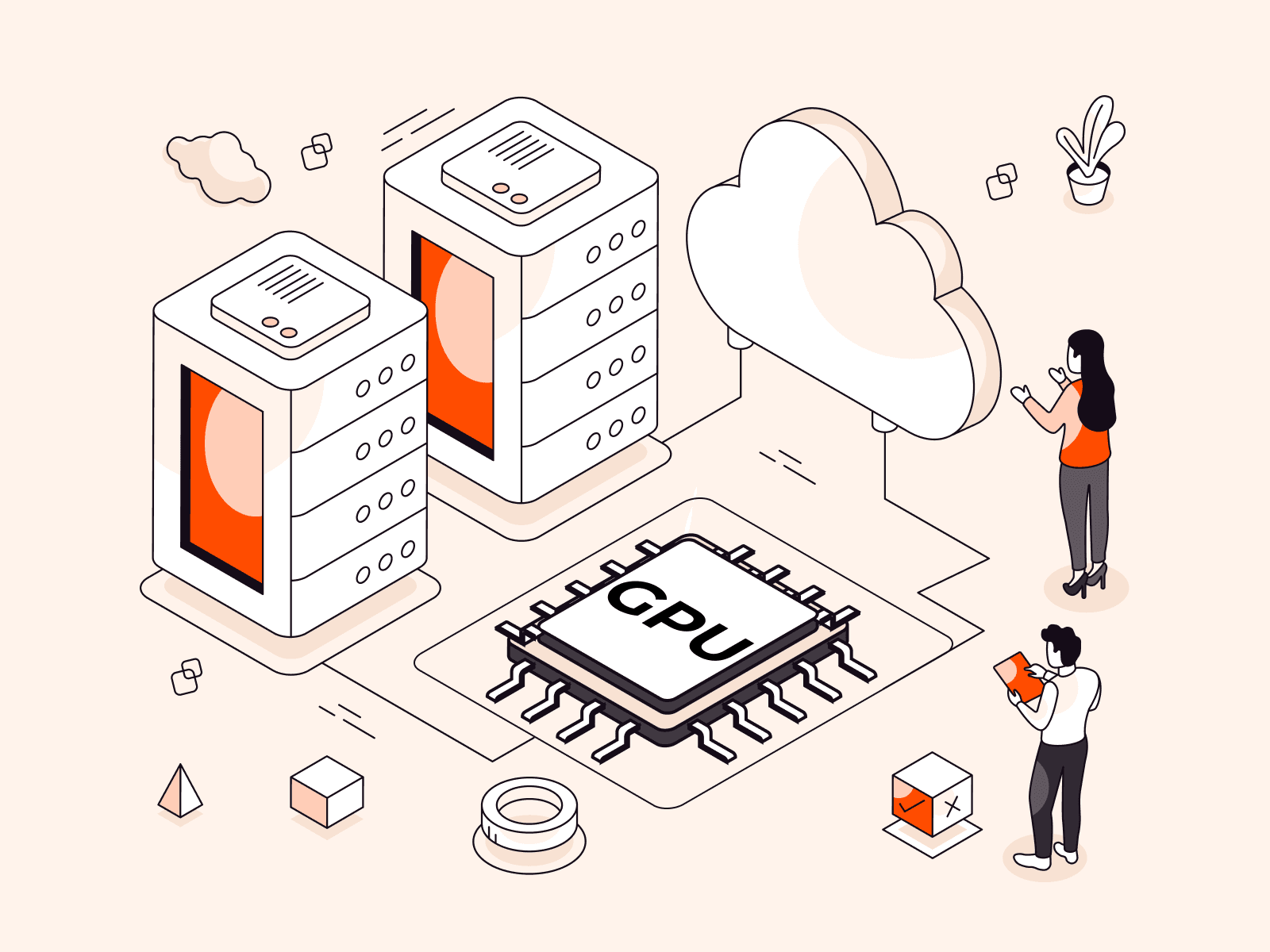TL;DR
This guide discusses everything needed to build a simple, scalable, and fully binary compatible Raspberry Pi cluster using QEMU, Docker, Docker Compose, and Ansible.
Introduction
The Raspberry Pi is no longer just a low-cost platform for students to learn computing, it’s now a legitimate research and development platform that’s being used for IoT, networking, distributed systems, and software development. It’s even being used administratively in production environments.
Not long after the first Raspberry Pi was released in 2012, several set out to build them into low-cost clusters, often for their research and testing purposes. Interns at DataStax built a multi-datacenter, 32 nodes Cassenda fault-tolerance demo, complete with a big red button to simulate the failure of an entire datacenter. David Guill built a 40-node Raspberry Pi Cluster that was intended to be part of his MSCE thesis. Balena, built “The Beast“, a 120 node Raspberry Pi cluster, for scaled testing of their online platform. And on the extreme end of the spectrum, Oracle built a 1060 node Raspberry Pi Cluster, which they introduced at Oracle OpenWorld 2019.
Innovation with the Raspberry Pi continues as they are turned into everything from wi-fi extenders, security cameras, and even bigger clusters. While the main value of these clusters is inherent in their size and low cost, their popularity makes them an increasingly common development platform. Since the Raspberry Pi uses an ARM processor, this can make development problematic for those of us who work exclusively in the cloud. While commercial solutions exist, we will be building our own emulated cluster using a fully open source stack hosted on Google Compute Engine.
Use Cases
Other than learning from the experience, Dockerizing an emulated Raspberry Pi enables us to do three things. One, it turns into software that would otherwise be a hardware-only device that nobody has to remember to carry around (I’m always losing the peripheral cables). Two, it enables Docker to do for the Pi what Docker does best for everything else: it makes software portable, easy to manage, and easy to replicate. And three, it takes up no physical space. If we can build one Raspberry Pi with Docker, we can build many. If we can build many, we can network them all together. While we may encounter some limitations, this build will emulate a cluster of Raspberry Pi 1s that’s logically equivalent to a simple, multi-node physical cluster.
Emulated Hardware Architecture
While technically not identical, the emulation software we will be using, QEMU, provides an ARM-Versatile architecture that’s roughly compatible with what is found on a Raspberry Pi 1. Some modifications to the kernel are necessary in order for it to work properly with Raspbian, but for our purposes, it’s one of the more stable open source solutions available.
pi@raspberrypi:~$ cat /proc/cpuinfo processor : 0model name : ARMv6-compatible processor rev 7 (v6l)BogoMIPS : 577.53Features : half thumb fastmult vfp edsp java tlsCPU implementer : 0x41CPU architecture: 7CPU variant : 0x0CPU part : 0xb76CPU revision : 7Hardware : ARM-Versatile (Device Tree Support)Revision : 0000Serial : 0000000000000000Compared to a Physical Raspberry Pi 1, they are nearly identical:
pi@raspberrypi:~ $ cat /proc/cpuinfoprocessor : 0model name : ARMv6-compatible processor rev 7 (v6l)BogoMIPS : 697.95Features : half thumb fastmult vfp edsp java tls CPU implementer : 0x41CPU architecture: 7CPU variant : 0x0CPU part : 0xb76CPU revision : 7Hardware : BCM2835Revision : 000dSerial : 000000003d9a54c5Background
What is QEMU?
QEMU is a processor emulator. It supports a number of different processors, but the only thing that we’re interested in is something that can run Raspberry Pi images natively without lot of difficulties. In this case, we’re going to be using QEMU 4.2.0, which supports an ARM11 instruction set that’s compatible with the Broadcom BCM2835 (ARM1176JZFS) chip found on the Raspberry Pi 1 and Zero. We will use ARM1176 support on QEMU, which will allow us to more or less emulate a Raspberry Pi 1. I say more or less because we will still need to use a customized Raspbian kernel in order to boot on the emulated hardware. QEMU support for the Pi is still in development, so our approach to getting it to work here is just a clever hack that will by no means be optimal or efficient in terms of CPU utilization.
QEMU Features
QEMU supports many of the same features found in Docker, however, it can run full software emulation without a host kernel driver. This means that it can run inside Docker, or any other virtual machine, without host virtualization support. The QEMU feature list is extensive, and the learning curve is steep. However, the primary feature that we will be focused on for this build is host port forwarding so that data can be passed to the host.
Dockerized QEMU
One of Docker’s strengths is that it doesn’t handle full-fledged virtualization, but instead relies on the architecture of the host system. Since our host system will be running an Intel processor, we can’t expect Docker to handle ARM operations on its own. So, we will be placing QEMU inside a Docker container. Since Docker is designed to run software at near-native performance, the operational efficiency challenge will be with QEMU itself. QEMU, on the other hand, supports emulations of a machine’s architecture completely with software. The advantage this has is that it can run inside any virtualized system or container, independent of its system architecture. If patient, we could even run a Dockerized Raspberry Pi container inside another Dockerized Raspberry Pi container. The drawback to QEMU is that it has comparatively poor performance compared to other types of virtualization. But we can benefit from the best of both worlds by leveraging QEMU’s ARM emulation while depending on Docker for everything else.
Raspbian
Based on Debian, Raspbian is a popular and well supported operating system for the Raspberry Pi, and is one of the most often recommended for the platform. The community is very active and well managed.
Physical Raspberry Pi Speed Comparison
The following tests are intended as a baseline for comparing our virtualized systems. Since we will be emulating a single-core, these tests are only single-core, single thread, regardless of how many physical cores are incorporated into the architecture.
Raspberry Pi 1 2011,12
Test execution summary: total time: 330.5514s total number of events: 10000 total time taken by event execution: 330.5002 per-request statistics: min: 32.92ms avg: 33.05ms max: 40.94ms approx. 95 percentile: 33.24msThreads fairness: events (avg/stddev): 10000.0000/0.00 execution time (avg/stddev): 330.5002/0.00Raspberry Pi 1 A+ V1.1 2014
Test execution summary: total time: 328.7505s total number of events: 10000 total time taken by event execution: 328.6931 per-request statistics: min: 32.71ms avg: 32.87ms max: 78.93ms approx. 95 percentile: 33.03msThreads fairness: events (avg/stddev): 10000.0000/0.00 execution time (avg/stddev): 328.6931/0.00Raspberry Pi Zero W v1.1 2017
Test execution summary: total time: 228.2025s total number of events: 10000 total time taken by event execution: 228.1688 per-request statistics: min: 22.76ms avg: 22.82ms max: 35.29ms approx. 95 percentile: 22.94msThreads fairness: events (avg/stddev): 10000.0000/0.00 execution time (avg/stddev): 228.1688/0.00Raspberry Pi 2 Model B v1.1 2014
Test execution summary: total time: 224.9052s total number of events: 10000 total time taken by event execution: 224.8738 per-request statistics: min: 22.20ms avg: 22.49ms max: 32.85ms approx. 95 percentile: 22.81msThreads fairness: events (avg/stddev): 10000.0000/0.00 execution time (avg/stddev): 224.8738/0.00Raspberry Pi 3 Model B v1.2 2015
Test execution summary: total time: 139.6140s total number of events: 10000 total time taken by event execution: 139.6087 per-request statistics: min: 13.94ms avg: 13.96ms max: 34.06ms approx. 95 percentile: 13.96msThreads fairness: events (avg/stddev): 10000.0000/0.00 execution time (avg/stddev): 139.6087/0.00Raspberry Pi 4 B 2018
Test execution summary: total time: 92.6405s total number of events: 10000 total time taken by event execution: 92.6338 per-request statistics: min: 9.22ms avg: 9.26ms max: 23.50ms approx. 95 percentile: 9.27msThreads fairness: events (avg/stddev): 10000.0000/0.00 execution time (avg/stddev): 92.6338/0.00Project Requirements
Single Host Specifications
Historically, QEMU has been single-threaded, emulating all cores of a system’s architecture on a single CPU. While that’s no longer the case, we are still going to be emulating a single core Raspberry Pi. We will do some benchmarks later to compare how different CPU limits on each node impacts performance. But for now, we will use one CPU per single-core node. Since QEMU has the potential to use a lot of CPU resources due to its inherent inefficiency, our initial three-node cluster will start with a baseline of at least one CPU per node, leaving one CPU dedicated to the host to avoid performance problems. The VM specs selected for this task are as follows.
Cloud Provider: Google Cloud PlatformInstance Type: n1-standard-4CPUs: 4Memory: 15GBDisk: 100GBOperating System: Ubuntu 18.04 LTSDocker
Installed on the host, we’re also using the default version of Docker that is available on the default apt repository for Ubuntu 18.04 LTS.
# docker -vDocker version 18.09.7, build 2d0083dDocker Compose
# docker-compose -vdocker-compose version 1.25.0, build 0a186604Docker Hub Ubuntu Image
18.04, bionic-20200112, bionic, latestQEMU
Installed inside the Docker container, we will be using the following version of QEMU for ARM:
# qemu-system-arm --versionQEMU emulator version 4.2.0Copyright (c) 2003-2019 Fabrice Bellard and the QEMU Project developersQEMU Customized Kernel for Raspbian
Loaded from QEMU inside Docker, we will use Dhruv Vyas‘s compiled kernel for Raspbian, which has been modified to be usable with QEMU.
Raspbian Lite Image
Also booted from QEMU, we will use an unmodified version of Raspbian Lite from 9/30/2019.
Expect (Tcl/Tk)
Installed on the Docker container is the following version of Expect:
# expect -vexpect version 5.45.4ssh/sshd
sshd will need to be enable on each Raspbian node, and ssh should be enabled on the host.
Ansible
The following version of Ansible is also being used, along with its other dependencies:
# ansible --versionansible 2.5.1 config file = /etc/ansible/ansible.cfg configured module search path = [u'/root/.ansible/plugins/modules', u'/usr/share/ansible/plugins/modules'] ansible python module location = /usr/lib/python2.7/dist-packages/ansible executable location = /usr/bin/ansible python version = 2.7.17 (default, Nov 7 2019, 10:07:09) [GCC 7.4.0]Building the Docker Images
QEMU Build Container
We will compile QEMU 4.2.0 from source. It will need all the supporting build tools, so to keep our app container as small as possible, we will create a separate build container for the QEMU build using a minimal version of Ubuntu 18.04 from Docker Hub.
QEMU App Container
Once the QEMU is compiled from source, we will transfer it to the app container. Also from Docker Hub, we will use the same minimal version of Ubuntu 18.04 to host the QEMU binary.
Docker Configuration
The Dockerfile
We will be using the following Dockerfile, which may also be found updated in this guide’s accompanying pidoc repository on Github. Each code snippet below makes up a segment of the Dockerfile. Thanks goes to Luke Child‘s for his work on dockerpi.
Build stage for qemu-system-arm:
FROM ubuntu AS qemu-system-arm-builderARG QEMU_VERSION=4.2.0ENV QEMU_TARBALL="qemu-${QEMU_VERSION}.tar.xz"WORKDIR /qemuRUN apt-get update && \ apt-get -y install \ wget \ gpg \ pkg-config \ python \ build-essential \ libglib2.0-dev \ libpixman-1-dev \ libfdt-dev \ zlib1g-dev \ flex \ bisonDownload source.
RUN wget "https://download.qemu.org/${QEMU_TARBALL}"RUN # Verify signatures...RUN wget "https://download.qemu.org/${QEMU_TARBALL}.sig"RUN gpg --keyserver keyserver.ubuntu.com --recv-keys CEACC9E15534EBABB82D3FA03353C9CEF108B584RUN gpg --verify "${QEMU_TARBALL}.sig" "${QEMU_TARBALL}"Extract tarball.
RUN tar xvf "${QEMU_TARBALL}"Build source.
RUN "qemu-${QEMU_VERSION}/configure" --static --target-list=arm-softmmuRUN make -j$(nproc)RUN strip "arm-softmmu/qemu-system-arm"Build the intermediary pidoc VM app image.
FROM ubuntu as pidoc-vmARG RPI_KERNEL_URL="https://github.com/dhruvvyas90/qemu-rpi-kernel/archive/afe411f2c9b04730bcc6b2168cdc9adca224227c.zip"ARG RPI_KERNEL_CHECKSUM="295a22f1cd49ab51b9e7192103ee7c917624b063cc5ca2e11434164638aad5f4"Transfer binary from build container to app container.
COPY --from=qemu-system-arm-builder /qemu/arm-softmmu/qemu-system-arm /usr/local/bin/qemu-system-armDownload modified kernel and install.
ADD $RPI_KERNEL_URL /tmp/qemu-rpi-kernel.zipRUN apt-get update && \ apt-get -y install \ unzip \ expectRUN cd /tmp && \ echo "$RPI_KERNEL_CHECKSUM qemu-rpi-kernel.zip" | sha256sum -c && \ unzip qemu-rpi-kernel.zip && \ mkdir -p /root/qemu-rpi-kernel && \ cp qemu-rpi-kernel-*/kernel-qemu-4.19.50-buster /root/qemu-rpi-kernel/ && \ cp qemu-rpi-kernel-*/versatile-pb.dtb /root/qemu-rpi-kernel/ && \ rm -rf /tmp/*VOLUME /sdcardThen we copy the entry point script from the host’s main directory.
ADD ./entrypoint.sh /entrypoint.shENTRYPOINT ["./entrypoint.sh"]Build the final app pidoc image with the Raspbian Lite filesystem loaded.
FROM pidoc-vm as pidocARG FILESYSTEM_IMAGE_URL="http://downloads.raspberrypi.org/raspbian_lite/images/raspbian_lite-2019-09-30/2019-09-26-raspbian-buster-lite.zip"ARG FILESYSTEM_IMAGE_CHECKSUM="a50237c2f718bd8d806b96df5b9d2174ce8b789eda1f03434ed2213bbca6c6ff"ADD $FILESYSTEM_IMAGE_URL /filesystem.zipADD pi_ssh_enable.exp /pi_ssh_enable.expRUN echo "$FILESYSTEM_IMAGE_CHECKSUM /filesystem.zip" | sha256sum -cThe entrypoint.sh File
First, the script determines if the filesystem has been downloaded or not, and if not, it downloads and decompresses it.
#!/bin/shraspi_fs_init() { image_path="/sdcard/filesystem.img" zip_path="/filesystem.zip" if [ ! -e $image_path ]; then echo "No filesystem detected at ${image_path}!" if [ -e $zip_path ]; then echo "Extracting fresh filesystem..." unzip $zip_path mv *.img $image_path rm $zip_path else exit 1 fi fi}The script then checks for an empty raspi-init file, which serves as a marker to determine if Expect has been launched previously to enable ssh on Raspbian.
if [ ! -e /raspi-init ]; then touch /raspi-init raspi_fs_init echo "Initiating Expect..." /usr/bin/expect /pi_ssh_enable.exp `hostname -I` echo "Expect Ended..."If Expect has already been previously enabled, then we only need to launch QEMU, without Expect. Note that we are forwarding port 22 on Raspbian to port 2222 inside the Docker container.
else /usr/local/bin/qemu-system-arm \ --machine versatilepb \ --cpu arm1176 \ --m 256M \ --hda /sdcard/filesystem.img \ --net nic \ --net user,hostfwd=tcp:`hostname -I`:2222-:22 \ --dtb /root/qemu-rpi-kernel/versatile-pb.dtb \ --kernel /root/qemu-rpi-kernel/kernel-qemu-4.19.50-buster \ --append "root=/dev/sda2 panic=1" \ --no-reboot \ --display none \ --serial mon:stdiofiEnable SSHD on Raspbian (Expect Tcl/Tk Method)
QEMU doesn’t have a straightforward method for running configuration scripts on boot. And because Raspbian doesn’t come with SSH enabled by default, we will have to turn it on ourselves. Our options are to do it manually or to use some sort of scripting tool that can interact with stdio. Another option is to customize the Raspbian image before installation. This would have to be done on the host, however, as Docker restricts the mounting of new filesystems. In any case, to make this build the most portable and host independent, the most straightforward for our purposes will be to use an Expect script, and have it copied into our Docker image on build.
The pi_ssh_enable.exp File
Since an unmodified Raspbian image has no accessible ports by default, we will use Expect to interface with stdio in QEMU, log in with a default username and password, and enable the sshd listener.
#!/usr/bin/expect -fset ipaddr [lindex $argv 0]set timeout -1spawn /usr/local/bin/qemu-system-arm \ --machine versatilepb \ --cpu arm1176 \ --m 256M \ --hda /sdcard/filesystem.img \ --net nic \ --net user,hostfwd=tcp:$ipaddr:2222-:22 \ --dtb /root/qemu-rpi-kernel/versatile-pb.dtb \ --kernel /root/qemu-rpi-kernel/kernel-qemu-4.19.50-buster \ --append "root=/dev/sda2 panic=1" \ --no-reboot \ --display none \ --serial mon:stdioexpect "raspberrypi login:"send -- "pi\r"expect "Password:"send -- "raspberry\r"expect "pi@raspberrypi:"send -- "sudo systemctl enable ssh\r"expect "pi@raspberrypi:"send -- "sudo systemctl start ssh\r"expect "pi@raspberrypi:"expect eofBuild Image
In the folder with the Dockerfile, we will be building our two containers. The first will be our build container that includes all the dependencies for compiling QEMU, and the other will be our app container for running QEMU.
docker build -t pidoc .Network Forwarding and Troubleshooting
Once the build is complete, bring it up detached and follow the logs.
docker run -itd --name testnode pidocdocker logs testnode -fRaspbian will download and decompressed automatically, and QEMU should begin booting from the image.
Once Raspbian is fully booted, Expect should automatically enable sshd. Log into the docker container and test that SSH is reachable from inside the container on port 2222.
# docker exec -it testnode bashroot@d4abc2f655e6:/# hostname -I172.17.0.3root@d4abc2f655e6:/# cat < /dev/tcp/172.17.0.3/2222SSH-2.0-OpenSSH_7.9p1 Raspbian-10Cancel out and kill the container and remove the volume.
root@d4abc2f655e6:/# exitexit# docker kill testnodetestnode# docker container rm testnodetestnodeTesting the Docker Container
Start/Test Container
We will need to start the container for testing. This is primarily to gain some intuition about the performance of QEMU so that we can better make design decisions regarding our cluster. The system should come up clean with maybe a few benign warnings related to differences between the somewhat more generalized emulated hardware and the expected physical raspberry Pi hardware. I found it necessary to make sure port forwarding was working properly between QEMU and the Docker image so that I could further verify that port forwarding between the Docker image and host was working properly. Our first goal is to double forward SSH so that QEMU is accessible directly from the host.
docker run -itd -p 127.0.0.1:2222:2222 --name testnode pidocdocker logs testnode -fOnce the system again comes online, test for sshd on port 2222 of the host by using ssh to log into Raspbian:
# ssh pi@localhost -p 2222The authenticity of host '[localhost]:2222 ([127.0.0.1]:2222)' can't be established.ECDSA key fingerprint is SHA256:N0oRF23lpDOFjlgYAbml+4v2xnYdyrTmBgaNUjpxnFM.Are you sure you want to continue connecting (yes/no)? yesWarning: Permanently added '[localhost]:2222' (ECDSA) to the list of known hosts.pi@localhost's password:Linux raspberrypi 4.19.50+ #1 Tue Nov 26 01:49:16 CET 2019 armv6lThe programs included with the Debian GNU/Linux system are free software;the exact distribution terms for each program are described in theindividual files in /usr/share/doc/*/copyright.Debian GNU/Linux comes with ABSOLUTELY NO WARRANTY, to the extentpermitted by applicable law.Last login: Tue Jan 21 12:24:59 2020SSH is enabled and the default password for the 'pi' user has not been changed.This is a security risk - please login as the 'pi' user and type 'passwd' to set a new password.pi@raspberrypi:~ $Testing Fractional CPU Utilization
To run this cluster, we’re using a GCP n1-standard-4 instance (a 4×15) running Ubuntu 18.04 LTS. But we now notice how inefficient QEMU is once Raspbian begins doing anything. Multiple Raspberry Pi instances might stack fine if their idle, but if we want to keep the system viable, we will need to restrict CPU utilization on each instance, or else the system could be rendered unusable once more than a few nodes are put under load. Fortunately, Docker can handle this for us. We have 15GB of ram on this instance, so let’s see what happens if we are slightly more ambitious and squeezed 6 Raspberry Pi containers onto our VM. We will have a whole core left for the host to manage other tasks without much risk of a failure. We can scale this at some point later with Docker Compose.
We will run two test containers at 50% and 100% for benchmark testing.
docker run -itd --cpus="0.50" -p 127.0.0.1:2250:2222 --name pidoc_50_test pidocdocker run -itd --cpus="1.00" -p 127.0.0.1:2200:2222 --name pidoc_00_test pidocAt this point, we technically already have a cluster. We just don’t have a method to manage them, except by hand.
Performance
While a full core allocation performs at near Physical Raspberry Pi speeds, an instance running at 50% runs rightly at half that speed. This might be manageable under certain circumstances, but it’s not the most desirable. The overall efficiency of the cluster may increase, depending on the task at hand. But for now, we will continue with our original full core allocation of 3 nodes, and then later it tests with 6 nodes.
Single Thread Benchmarks
Testing can be done by using the following simple benchmark tests.
CPU Prime Test
sysbench --test=cpu --cpu-max-prime=9999 runCPU Integer Test
time $(i=0; while ((i<9999999)); do ((i++)); done)HDD Read Test
dd bs=16K count=102400 iflag=direct if=test_data of=/dev/nullHDD Write Test
dd bs=16k count=102400 oflag=direct if=/dev/zero of=test_dataResults (Single Thread)
For this guide, we will only focus on the CPU Prime Test using sysbench
Host
General statistics: total time: 10.0009s total number of events: 9417Latency (ms): min: 1.04 avg: 1.06 max: 1.63 95th percentile: 1.10 sum: 9992.36Threads fairness: events (avg/stddev): 9417.0000/0.00 execution time (avg/stddev): 9.9924/0.00Virtual Raspberry Pi – Limit: 100%
Test execution summary: total time: 397.8781s total number of events: 10000 total time taken by event execution: 397.4056 per-request statistics: min: 38.61ms avg: 39.74ms max: 57.15ms approx. 95 percentile: 40.92msThreads fairness: events (avg/stddev): 10000.0000/0.00 execution time (avg/stddev): 397.4056/0.00Virtual Raspberry Pi – Limit: 50%
Test execution summary: total time: 823.8272s total number of events: 10000 total time taken by event execution: 822.9329 per-request statistics: min: 38.68ms avg: 82.29ms max: 184.02ms approx. 95 percentile: 94.65msThreads fairness: events (avg/stddev): 10000.0000/0.00 execution time (avg/stddev): 822.9329/0.00Compose the Cluster
Create docker-compose.yml File
We will use Docker Compose for cluster creation. Initially, we will keep this at three nodes to keep it easy to manage. Once we have a proof of concept cluster, we can then scale it out. The most straightforward way to handle this is to map separate ports to localhost for each container. We can specify a range of ports to be used in the docker-compose.yml file, as noted below.
version: '3'services: node: image: pidoc ports: - "2201-2203:2222"Bring Up Cluster
To bring up three nodes with docker-compose, use the --scale option.
docker-compose up --scale node=3Ansible Configuration
Now that we have all the infrastructure in place for a cluster, we need to manage it. We could use Docker to double attach to the QEMU monitor, but ssh is much more robust. Since we are using ssh, we can use Ansible. A few basic operations are provided here: update, upgrade, reboot, and shutdown. These can be expanded as needed to develop a more robust system.
hosts File
Please note of the ports we specified in the docker-compose.yml file earlier, and edit your hosts inventory accordingly.
version: '3'services: node: image: pidoc ports: - "2201-2203:2222"For a more comprehensive walkthrough of Ansible, please read How to Install and Configure Ansible on Ubuntu.
update.yml File
---- name: Apt update Pi... hosts: pidoc-cluster tasks: - name: Update apt cache... become: yes apt: update_cache=yesUsage: ansible-playbook playbooks/update.yml -i hosts
upgrade.yml File
---- name: Upgrade Pi... hosts: pidoc-cluster gather_facts: no tasks: - name: Update and upgrade apt packages... become: true apt: upgrade: yes update_cache: yes cache_valid_time: 86400Usage: ansible-playbook playbooks/upgrade.yml -i hosts
reboot.yml File
---- name: Reboot Pi... hosts: pidoc-cluster gather_facts: no tasks: - name: Reboot Pi... shell: shutdown -r now async: 0 poll: 0 ignore_errors: true become: true - name: Wait for reboot... local_action: wait_for host={{ ansible_host }}state=started delay=10 become: falseUsage: ansible-playbook playbooks/reboot.yml -i hosts
shutdown.yml File
---- name: Shutdown Pi... hosts: pidoc-cluster gather_facts: no tasks: - name: 'Shutdown Pi' shell: shutdown -h now async: 0 poll: 0 ignore_errors: true become: true - name: "Wait for shutdown..." local_action: wait_for host={{ ansible_host }} state=stopped become: falseUsage: ansible-playbook playbooks/shutdown.yml -i hosts
Scaling Up
Docker Compose makes scaling Raspberry Pi containers on the same host near trivial. By using Ansible for cluster management, it also becomes incredibly easy to scale horizontally to other hosts by changing the port binding from localhost to an IP address that’s routable. Here is our example with 6 nodes instead of 3.
docker-compose.yml File
version: '3'services: node: image: pidoc ports: - "2201-2212:2222" deploy: resources: limits: cpus: "0.5"Bring Up Cluster
We should stop containers from our previous cluster, and prune all volumes before scaling up our revised cluster. To bring up all 6 nodes with docker-compose, use the --scale option again.
docker-compose up --scale node=5Future Work
Raspberry Pi emulation is still under development for QEMU. While the configuration for this project is relatively stable, there’s a lot of room for improvement. Attempting a migration to Raspberry Pi 3 emulation would be an ambitious next step. Docker Compose, though designed for single-host builds, is already easy enough to replicate to other hosts manually or through Ansible. But it could just as easily be scaled out with Swarm or k8s, enabling us to build an emulated Raspberry Pi cluster of any size. Additionally, with one or more port redirects, other systems of control can be put into place, including various node endpoints, depending on purpose and application.
Related articles
Subscribe to our newsletter
Get the latest industry trends, exclusive insights, and Gcore updates delivered straight to your inbox.






